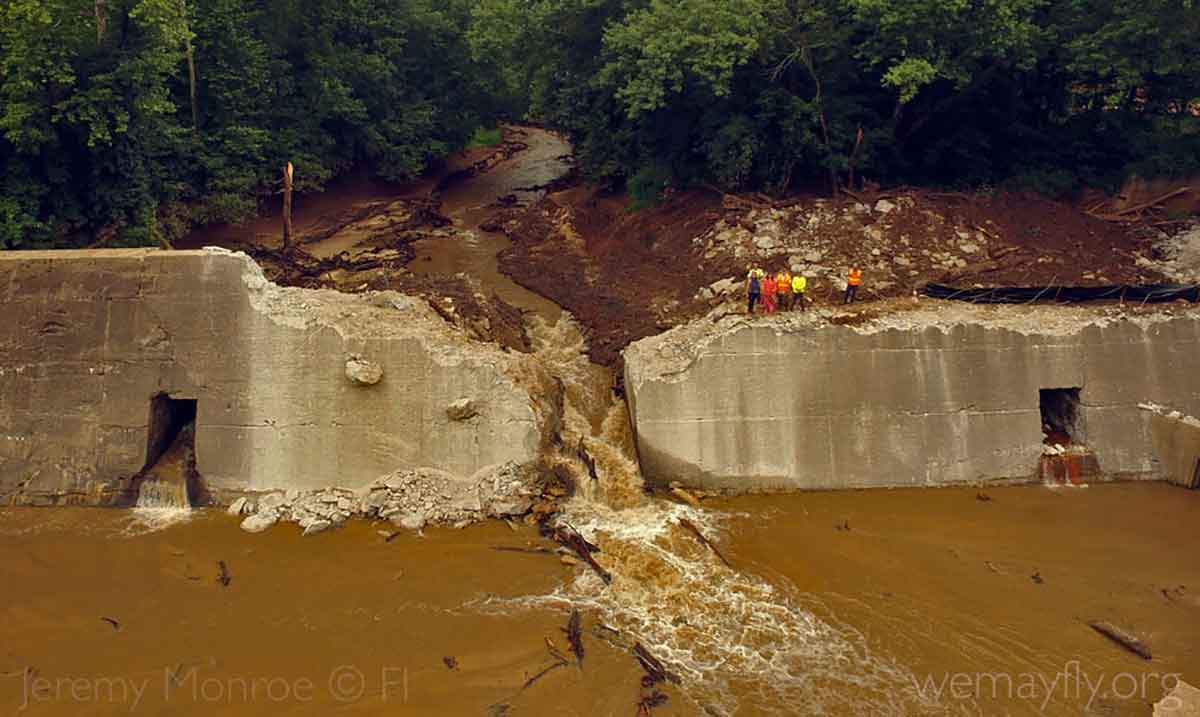Dam Removal and Extreme Weather
Helping communities be safer and stronger




There are over 550,000 dams and over 298,000 road-related barriers, such as culverts, that fragment rivers across the United States. Since these dams and barriers were constructed, storms and flooding have become more intense. At the same time, many of these structures are aging and in disrepair. They have outlived their purpose and are putting nearby communities at risk.
A new paper from Utah State University, “Barrier Removal is a Strategy for Climate Resilience,” finds that removing aging, unsafe, and obsolete dams and barriers can help communities across the country become stronger and safer in the face of extreme weather.
Download the factsheet and paper by clicking on the buttons above
There are dams and barriers that provide useful services and should not be removed. But for those structures that are outdated or unsafe, or that create significant environmental harm, removal is an option that should be considered.
The paper’s authors, led by Dr. Sarah Null, Ph.D., conducted an extensive review of scientific reports and publications on this topic. They identified 50 studies, published between 2009 and 2024, that examined dam and barrier removal in relation to climate change, resilience, or adaptation.
The paper’s authors found that communities are removing dams and barriers for a variety of reasons, including safety, economics, cultural benefits, and environmental protection.
Obsolete and Unsafe Dams and Barriers Pose Public Safety Risks
- 70% of dams have outlived the average design life for a dam.
- 16,700 dams are considered high-hazard and, if they were to fail, present a risk to people living downstream.
- 64 years is the average age of U.S. dams.
Much of the infrastructure we built decades ago can no longer safely address today’s extreme weather patterns. Weather is becoming more extreme, with more intense storms, catastrophic flooding, persistent droughts, and warming water temperatures. Aging dams and barriers and those that are not adequately designed or maintained are becoming increasingly dangerous in the face of extreme weather.

Benefits of Removing Outdated Dams
Many dams no longer provide the services for which they were originally designed, having either outlived the need for those services or already been replaced by more modern technology. When better alternatives to dams exist, removal can be the right move for communities, ecosystems, and budgets. In many cases, newer technologies can replace the services dams provide more safely and effectively, and can make communities stronger and safer.
Human Safety
Many aging dams and barriers weren’t built to withstand increasingly severe storms and floods. Dam failures and near misses that endangered communities have occurred throughout the country, including in Vermont, California, Michigan, and North Carolina. Proactive dam removal helps prevent catastrophic failures and reduces the need for costly emergency responses.
Economic Benefits
While dam and barrier removal has upfront costs, it’s often more affordable than repairing and maintaining aging infrastructure or dealing with disaster recovery. In many cases, increasingly frequent and severe droughts and floods are making dams less economically viable. In addition, dam removal can cost far less than rehabilitation and long-term maintenance expenses, making it a practical option.
Cultural Benefits
Removing barriers is also a means for preserving cultural practices, including fish harvests. Dams have damaged and flooded areas that are culturally important for Tribes, including Tribal gathering sites, celebration sites, and ancestral community sites. Dams and culverts have severely impaired native fish populations that Tribes have depended on for millennia. Barrier removals are necessary for preserving and respecting Tribal traditions and ancestral lands.
Clean Water and Environmental Health
Dam and barrier removal can restore river health, improve water quality, and bring back fish and wildlife habitats. It helps re-establish access to cooler, free-flowing waters essential for native fish, wildlife, healthy ecosystems, and downstream water supplies. Without barriers, fish can access upstream habitats and escape high temperatures and drought conditions.